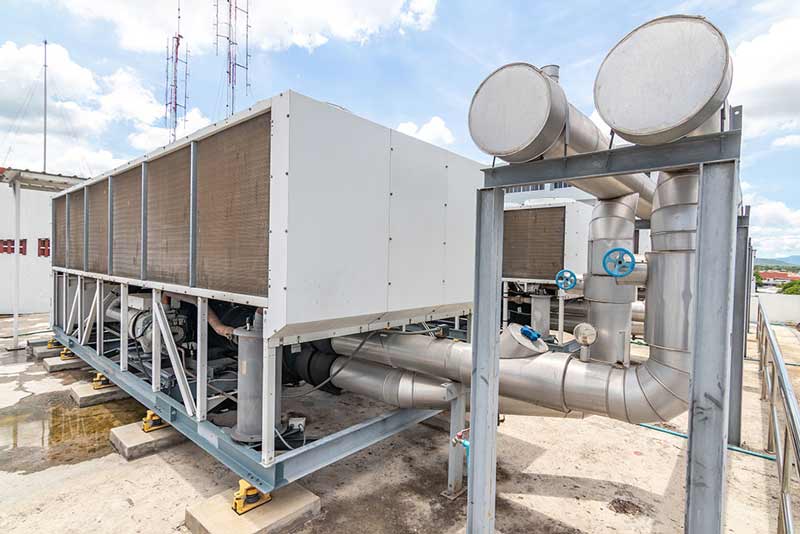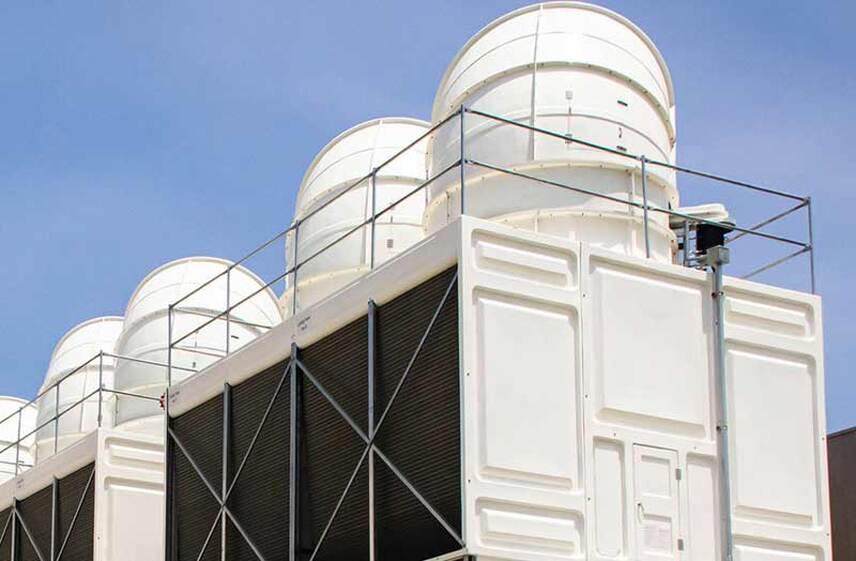Available 24/7
Greensboro (336) 498-7609
Wilmington (910) 228-5199
Raleigh (336) 498-7609
Available 24/7
Greensboro (336) 498-7609
Wilmington (910) 228-5199
Raleigh (336) 498-7609
We service, install, repair, & maintain all types of commercial chiller systems. Superior Mechanical Inc. is the trusted source for chiller repair services for businesses and commercial facilities throughout the Piedmont Triad and Wilmington, NC.

If you are looking for a qualified, professional team to repair, maintain and install commercial chillers to serve all your commercial HVAC and manufacturing needs, Superior Mechanical can get the job done right the first time. If your Greensboro, North Carolina, structure does not yet have a chiller, we are more than happy to help you choose a brand that’s guaranteed to deliver the most accurate temperature, humidity, and ventilation required for your unique space.
What sets us apart from other HVAC companies throughout Greensboro, North Carolina, and beyond is that we know each building has a special set of conditions necessary to ensure the health, comfort, and productivity of all of its occupants. We choose brands like Trane, which have been developed with decades of knowledge and industry leadership. We will also select systems with muted sound levels and insignificant environmental impact.
Why do you need a commercial chiller? Not only do they play a vital role in building a comfortable environment, but they also help reduce operating costs by using greater energy efficiency levels. If you are interested in a commercial chiller repair, installation, or maintenance package, contact us today.
No matter what kind of facility you have, we offer a handful of annual, bi-annual, and quarterly service packages that can help safeguard industrial HVAC systems and commercial chillers against unexpected emergencies. Superior Mechanical’s team of certified professionals will make sure chillers are frequently inspected, cleaned, and repaired so you always have a cool and clean environment to work in. If you’re not sure what type of commercial chiller you need, we are more than happy to answer all of your questions and help you decide. We are the premier commercial chiller team in the greater Piedmont Triad area.
Commercial chillers generate chilled water which is used to provide air conditioning in buildings, which is a must-have during the hot, humid North Carolina summers. There are a few different types of chillers, and they can be rated between one to 1,000 tons of cooling energy. Chillers are broken into categories based on how they remove heat from the refrigerant being used to cool the building. Commercial chillers either utilize air, water, or evaporation in order to bring the refrigerant back down to temperature. Here’s a quick overview of the different types of commercial chillers and compressor types each chiller may be designed with:
Air Cooled Chiller
Air cooled chillers are typically used in smaller scale buildings because these systems require a larger ductwork system. Air cooled commercial chillers also tend to be less energy efficient when the point between the base and area served is of a larger distance. Efficiency also decreases if one unit is being used to service multiple areas. They use air to cool their condensers so that the water being used to cool the area is brought back down to the proper temperature.
Water Cooled Chiller
Water Cooled Chillers are usually used in larger buildings and for entire building campuses. They range in size and can even be used to cool large spaces such as airports, shopping malls, and skyscrapers. Water cooled commercial chillers typically utilize cooling towers in order to remove the heat from the refrigerant and bring it back down to temperature.
Evaporative Chiller
Evaporative Chillers work through the process of evaporation to remove heat from a space—water absorbs a large amount of heat to evaporate. In dry climates, evaporative chillers have the added benefit of conditioning the air with more moisture for the comfort of building occupants.
Chillers can be divided into different categories based on the compressor type they utilize. The compressor types include: reciprocating, centrifugal, screw-driven, and absorption. The first three types of chillers are mechanical chillers powered by electric motors, steam, or gas turbines. In contrast, an absorption chiller is powered by a heat source, like steam, and it does not use any moving parts.
Reciprocating
Reciprocating compressors use pistons driven by a crankshaft and deliver a small amount of refrigerant at very high pressure. Because of their relatively low price point they were popular in the past, but issues with noise and reliability have made reciprocating chillers less popular. Regular maintenance and upkeep are very important with reciprocating chillers.
Centrifugal
Centrifugal compressors have very few moving parts which makes them a favorite in the industry. They are more energy-efficient than their reciprocating counterparts, and provide a greater flow of refrigerant than a similarly sized centrifugal compressor. They also require less maintenance, although regular inspections should still be scheduled.
Screw-Driven
Screw-Driven Compressors utilize two screws that are fitted together and rotate in order to compress through direct volume reduction. With screw-driven chillers, oil changes, filter replacement, and strainer replacements are required periodically. These also run better with regular visual inspection.
Absorption
An absorption chiller uses a high-energy source, sometimes steam, to boil the refrigerant. In the absorber, refrigerant vapor is absorbed by a lithium bromide solution and condenses into a vapor, releasing the heat it acquired in the evaporator. Because lithium bromide is a salt, if the solution falls below saturation temperature, it can crystallize. In addition to regularly scheduled inspections, a pump teardown and inspection will be required every 5 to 10 years as well as an inspection of the firing rate and safety of direct-fired burners.

In most process cooling applications, a pumping system is used to circulate cool water or a water/glycol solution from the chiller to the process. The cool liquid eliminates heat from the process, and the warm fluid goes back to the chiller. The process water helps heat transfer from the process to the chiller.
Process chillers host a chemical compound called a refrigerant. Depending on the required temperatures, there are many types of refrigerants and applications, but they all work on the same principle of compression and phase-change of the refrigerant from a liquid to a gas and back to a liquid. This method of heating and cooling the refrigerant and changing it from a gas to a liquid and back again is what’s known as the refrigeration cycle.
The refrigeration cycle begins with a low-pressure liquid/gas mix entering the evaporator. Inside, heat from the process water or water/glycol solution boils the refrigerant, which alters it from a low-pressure liquid to a low-pressure gas. The low-pressure gas enters the compressor where it is compacted to high-pressure gas. The high-pressure gas enters the condenser where ambient air or condenser water subtracts heat to cool it to a high-pressure liquid. The high-pressure liquid then goes to the expansion valve, which controls how much liquid refrigerant enters the evaporator, ultimately beginning the refrigeration cycle all over again.